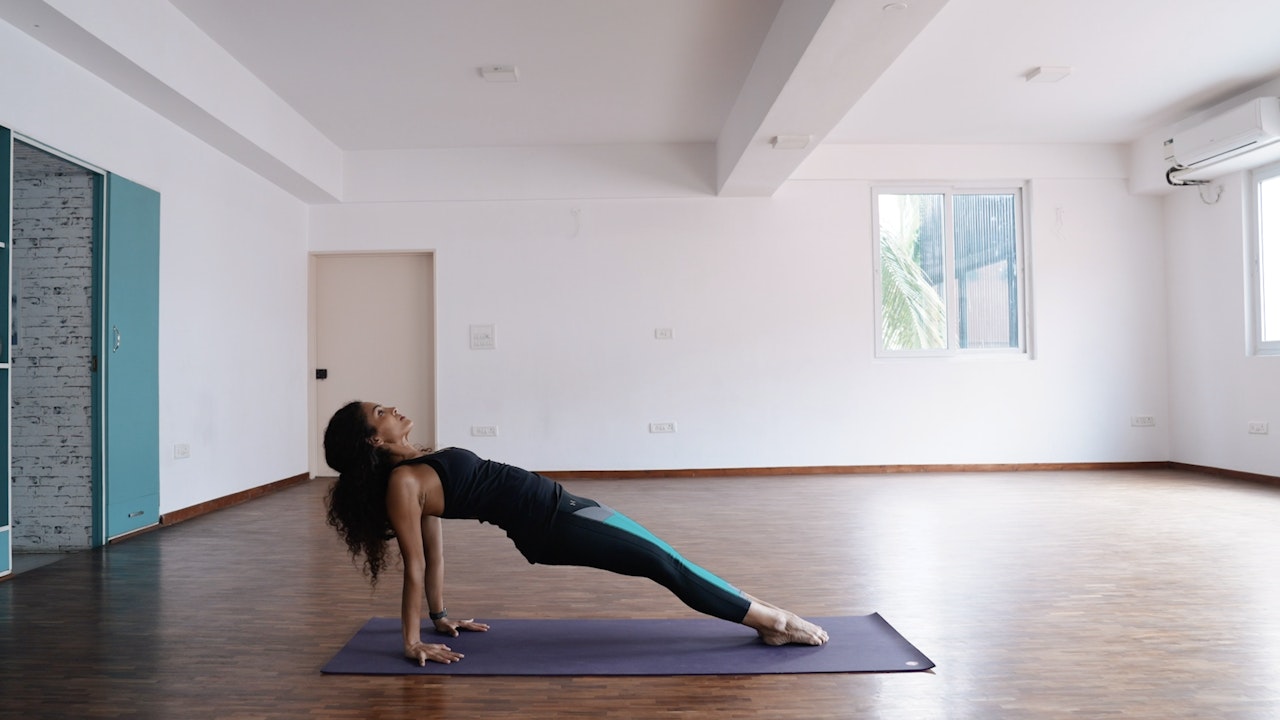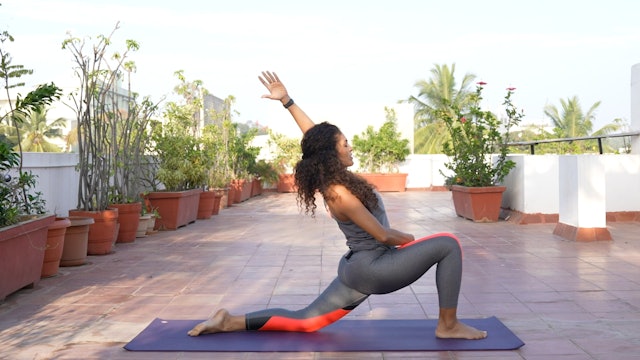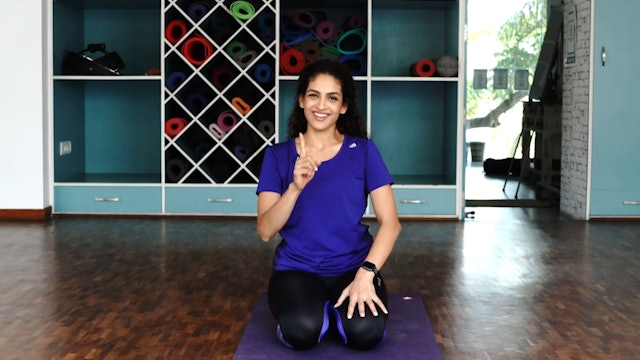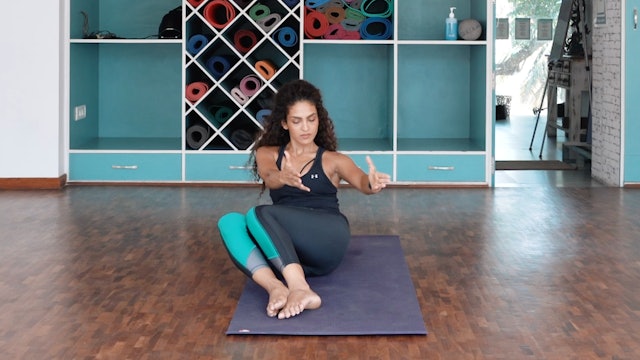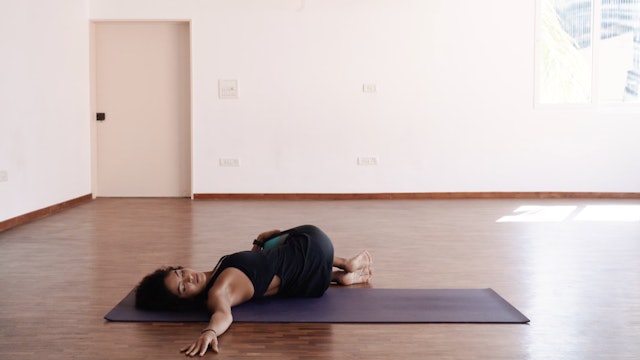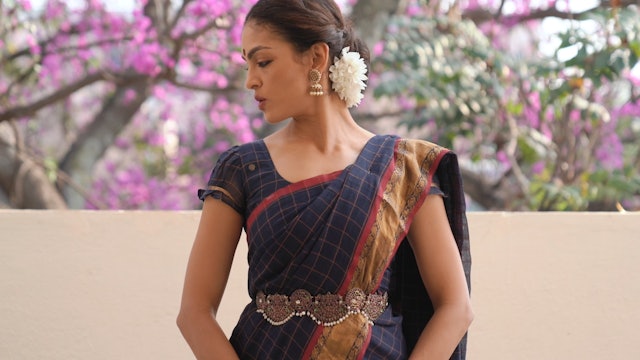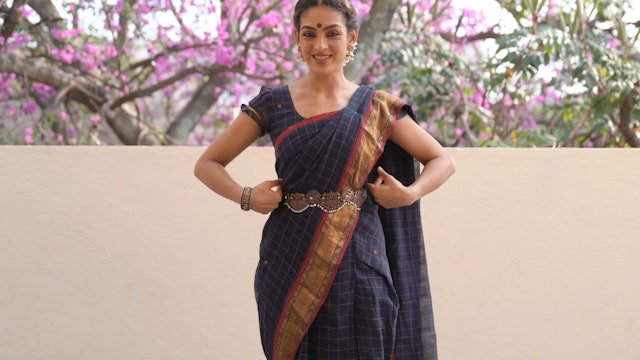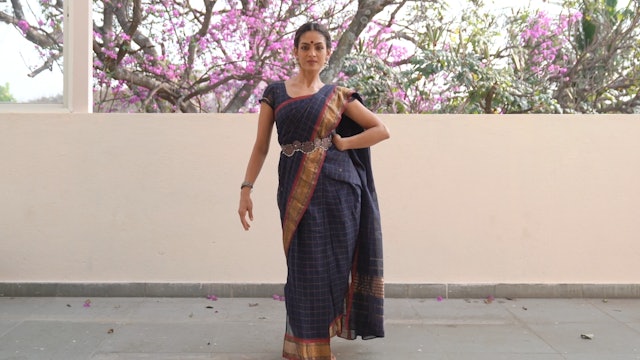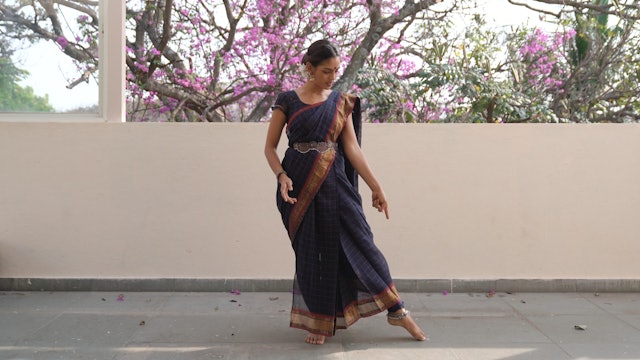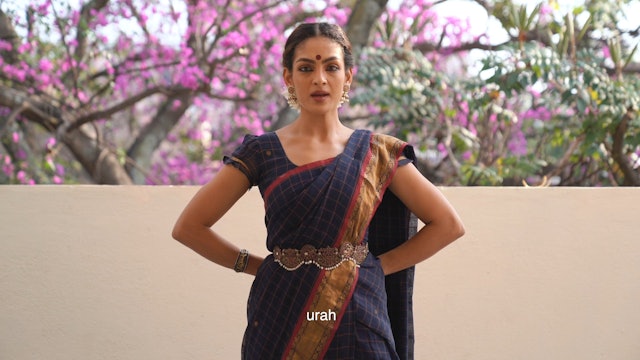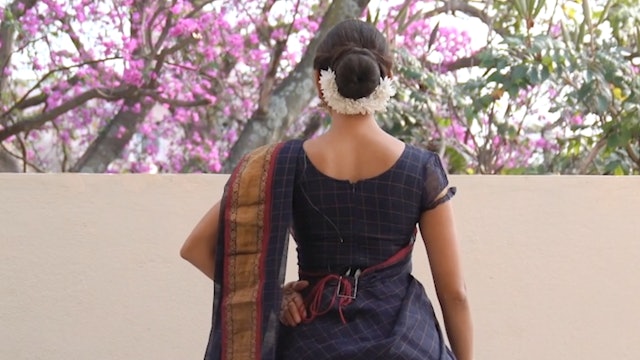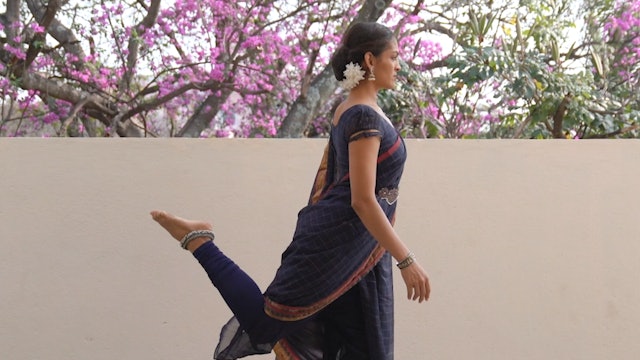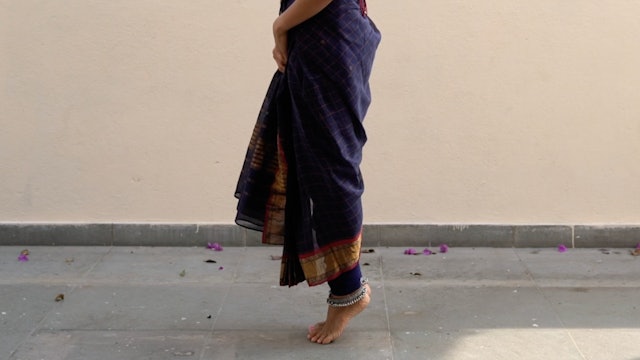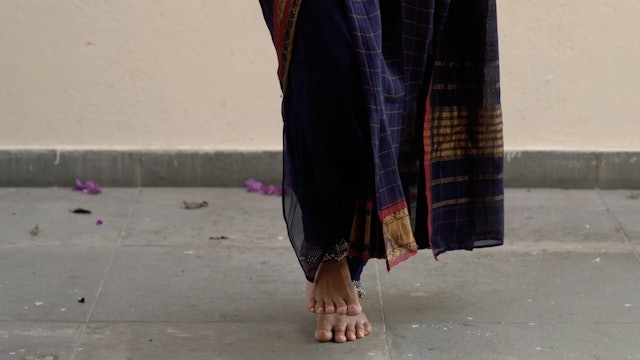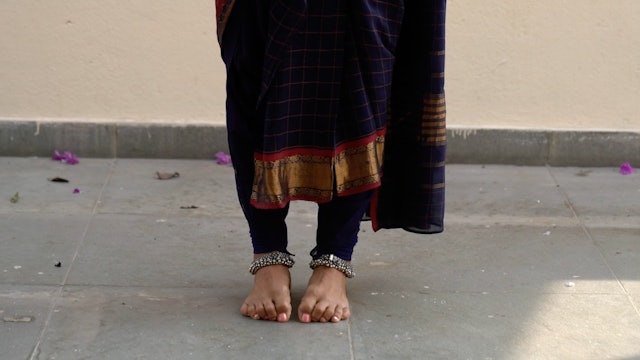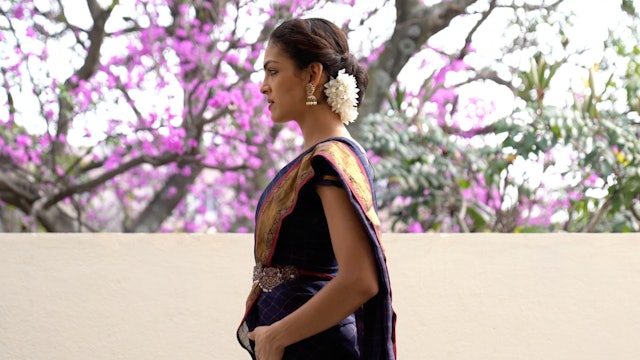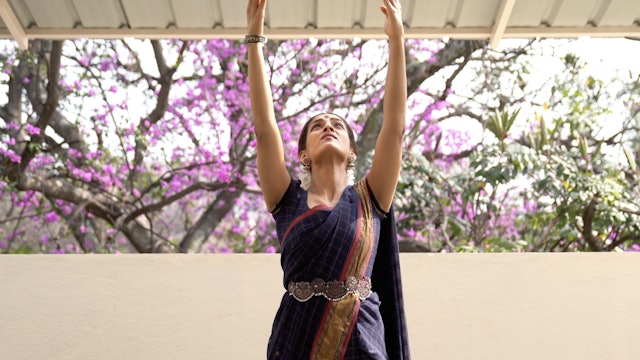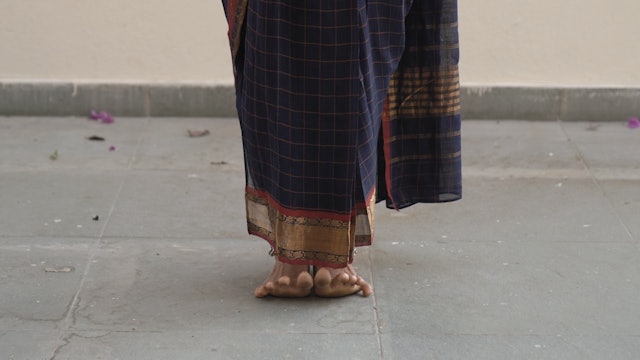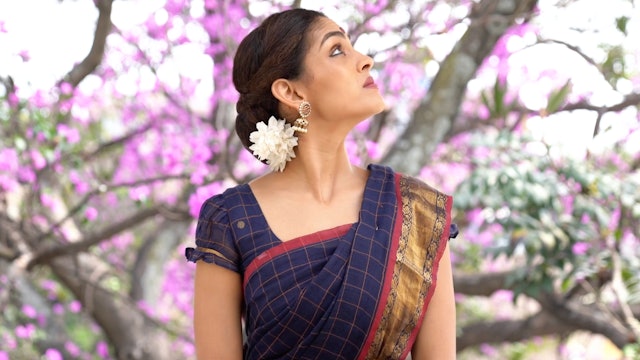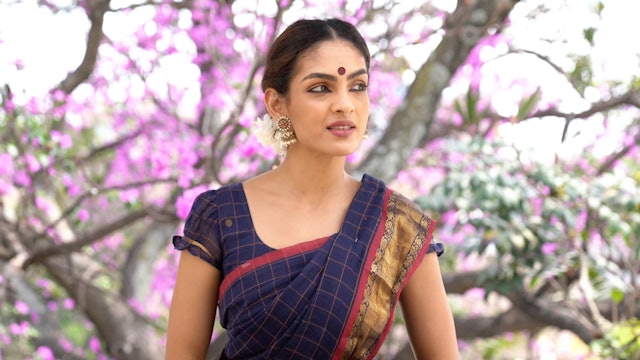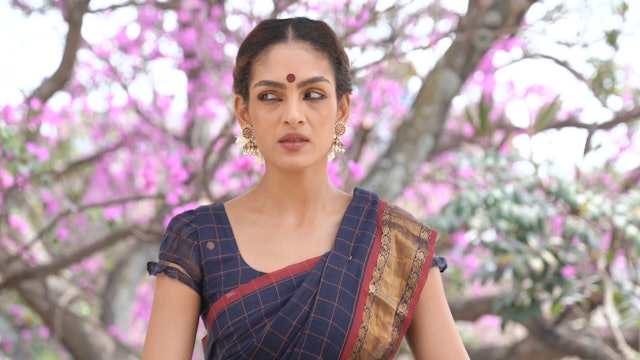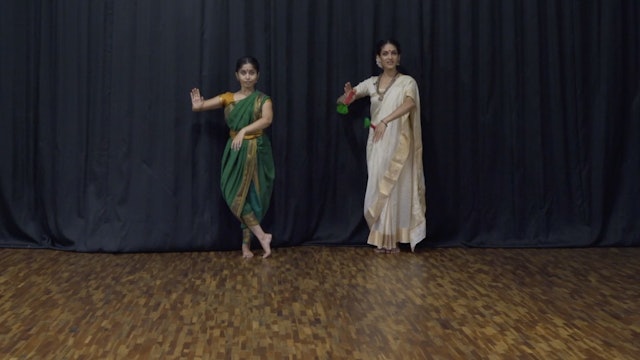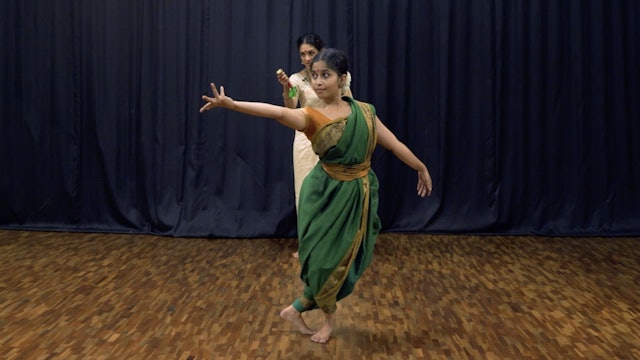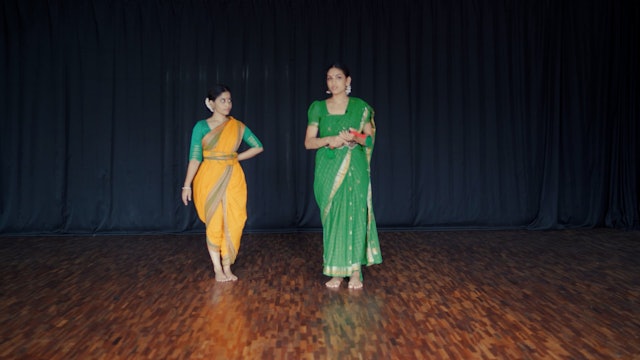-
The complete Raadha Kalpa Warm Up: Level 2
This Warm- up adds a few more variations to the previously introduced warm-up and expects that your strength has progressed, so please make certain that you have practised the following though the past months, atleast 5 times each, slowly with awareness before doing this warm-up.
Legs and core 1...
-
Hip Stabilisers: Gluteals, rotators, adductors.
This works on all the muscles that stabilise at the hip joint. These muscles are needed to lunge with stability, squat with proper muscular engagement and also balance on one leg. These muscles will help the dancer develop stability while dancing and also prevent injuries in the process.
You mu...
-
Musical Series: Core B
This sequence of exercises reinforces ideas that have already been introduced in the previous instructed series for the Core muscles/ Obliques. It is recommended to start on the musical series only once you have practised the instructed series over several months, so you already have internal awa...
-
Musical Series: Core C
This sequence of exercises reinforces ideas that have already been introduced in the previous instructed series for the Core muscles. It is recommended to start on the musical series only once you have practised the instructed series over several months, so you already have internal awareness of ...
-
Musical Series: Advanced Core
This sequence of exercises reinforces ideas that have already been introduced in the previous instructed series for the Core muscles. It is recommended to start on the musical series only once you have practised the instructed series over several months, so you already have internal awareness of ...
-
Shiro bheda Shloka
The head is considered one of the Angas, or major limbs according to the Natyashastra.
The movements of the head are used not only for the precise control in the execution of Nritta but also to communicate meaning in the context of gesture.
Please refer to the Shloka below for pronunciation. ...
-
Pārśva Bheda Shloka
The side, Parshva is considered one of the Angas, or major limbs according to the Natyashastra.
The movements of the side are used not only for the precise control in the execution of Nritta but also to communicate meaning in the context of gesture.
Please refer to the Shloka below for pronun...
-
Katī bheda Shloka
The hips are considered one of the Angas, or major limbs according to the Natyashastra.
The movements of the hips and waist are used not only for the precise control in the execution of Nritta but also to communicate meaning in the context of gesture.
Please refer to the Shloka below for pronun...
-
Pādah bheda Introduction
Explains the things to keep in mind when executing the foot movements. Please watch carefully before practising with the shloka.
-
Urō bheda Shloka
The chest or Uras is considered one of the Angas according to the Natyashastra. The movements of the chest are used not only for the precise control in the execution of Nritta but also to communicate meaning in the context of gesture.
Please refer to the Shloka below for pronunciation. Please no...
-
Ūru bheda Shloka
The thighs are considered one of the Upāngas, or minor limbs according to the Natyashastra.
The movements of the thighs are used not only for the precise control in the execution of Nritta but also to communicate meaning in the context of gesture.
Please refer to the Shloka below for pronunciat...
-
Janghā bheda Shloka
The shins/ shanks are considered one of the Upāngas, or minor limbs according to the Nātyaśāstra
The movements are used not only for the precise control in the execution of Nritta but also to communicate meaning in the context of gesture.
Please refer to the Shloka below for pronunciation. Plea...
-
Pārśni bheda Shloka
The heels are considered one of the Upāngas, or minor limbs
The movements are used not only for the precise control in the execution of Nritta but also to communicate meaning in the context of gesture.
Please refer to the Shloka below for pronunciation. Please note that the separate movements ...
-
Gulphā bheda Shloka
The Ankle is considered one of the Upāngas, or minor limbs according to the Sangīta Ratnākara.
The movements of the ankle are important in pure dance and in emotive contexts.
Please refer to the Shloka below for pronunciation. Please note that the separate movements of the head when put togethe...
-
Thala bheda Shloka
The soles of the feet are considered one of the Upāngas, or minor limbs.
The movements are used not only for the precise control in the execution of Nritta but also to communicate meaning in the context of gesture.
Please refer to the Shloka below for pronunciation. Please note that the separat...
-
Udara bheda Shloka
The stomach is considered one of the Upāngas, or minor limbs.
The movements are used primarily to communicate meaning in the context of gesture.
Please refer to the Shloka below for pronunciation. Please note that the separate movements of the head when put together in a Shloka form 'Sandhis', ...
-
Bāhu bheda Shloka
The arms considered one of the Upāngas, or minor limbs.
The movements are used primarily to communicate meaning in the context of gesture and also clear articulation in dance or nritta.
Please refer to the Shloka below for pronunciation. Please note that the separate movements of the head when...
-
Ćarañāguli bheda Shloka
The toes are considered one of the Upāngas, or minor limbs.
The movements are used primarily to communicate meaning in the context of gesture.
Please refer to the Shloka below for pronunciation. Please note that the separate movements of the head when put together in a Shloka form 'Sandhis', or...
-
Shirobheda Abhinayadarpanam
The Shirobhedas, as described in the Abhinaya Darpana are 9 in number.
These Shirobhedas, or gestures of the head are used primarily communicate meaning gesturally, and also used for specificity in Nritta.Please refer to the Shloka below for pronunciation. Please note that the separate movement...
-
Grīvabheda Abhinayadarpanam
The Grīvabhedas, as described in the Abhinaya Darpana are 4 in number.
These Grīvabhedas, or gestures of the neck are used primarily communicate meaning gesturally, and also used for specificity in Nritta.Please refer to the Shloka below for pronunciation. Please note that the separate movement...
-
Drishtibheda Abhinyadarpana
The Drishtibhedas, as described in the Abhinaya Darpana are 8 in number.
These Drishtibhedas, or gestures of the eyes are used primarily communicate meaning gesturally, and also used for specificity in Nritta.Please refer to the Shloka below for pronunciation. Please note that the separate move...
-
Varnam, "Adi Shivane" : Part 8
Raga: Todi
Adi Tala
Composer: K.N.Dandayudapani Pillai.
Choreography: Guru Narmada (Jathis) , Adapted by Rukmini Vijayakumar
Language: TamilThe Varnam speaks from the perspective of a Nayika that is longing to see Lord Shiva.
This video goes through the last line of the pallavi of the Varnam s...
-
Varnam, "Adi Shivane" : Part 9
Raga: Todi
Adi Tala
Composer: K.N.Dandayudapani Pillai.
Choreography: Guru Narmada (Jathis) , Adapted by Rukmini Vijayakumar
Language: TamilThe Varnam speaks from the perspective of a Nayika that is longing to see Lord Shiva.
This video goes through the chitteswaram.
P: Adi shivanaik-kANavE A...
-
Varnam, "Adi Shivane" : Part 9A Chitteswara muktayam
Raga: Todi
Adi Tala
Composer: K.N.Dandayudapani Pillai.
Choreography: Guru Narmada (Jathis) , Adapted by Rukmini Vijayakumar
Language: TamilThe Varnam speaks from the perspective of a Nayika that is longing to see Lord Shiva.
This video goes through the muktayam of the chitteswara
P: Adi shiv...

